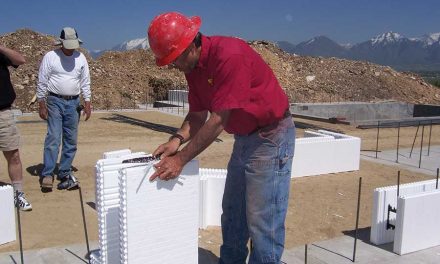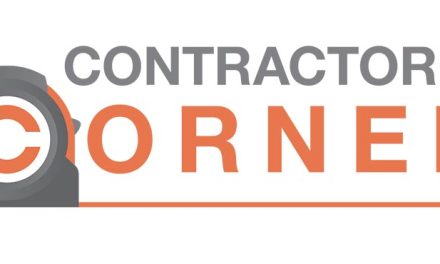by Randy Wilkerson
The December 2008 issue of this magazine presented an overview of some of the different commercial sector opportunities for the ICF industry.
Over the next several issues I will be discussing each of these sectors, and how to position your companies to infiltrate these markets. I will also provide you with resources to help you locate these opportunities in your geographic area as well as strategies to help you position ICF’s to the AEC community and hopefully providing you the opportunity to close more deals.
Each new year brings the promise of a fresh start, so let’s flip our calendars, reinvent our businesses and find those opportunities lurking out there for the ICF industry.
In this issue I will focus on school construction. By now I am sure most of you have become aware of the push by the individual states as well as the Federal Government to “Green our Schools”.
Several special interest publications have highlighted the benefits of green, energy efficient schools, from healthier students, to improved learning, to greater teacher retention. The common denominator in almost every single project that I have investigated or reviewed is that the envelope of the structure is built utilizing some form of ICF construction.
Here lies your opportunity.
The Mandate
In June of 2008 Congressman Ben Chandler, (D-KY) introduced to the House of Representatives, H.R. 3021, titled 21st Century Green High Performing School Facilities Act, which is now attached to the American Recovery and Reinvestment Act. This bill appropriates $14 billion dollars to improve the health, safety, learning environment and energy efficiency of our nation’s aging K-12 public schools.
Chandler estimates the bill would create some 2 million jobs. The new President’s Stimulus Bill actually contains $41 billion allocated to the improvement of the nation’s schools.
According to the U.S. Green Building Council, there are currently about 1,000 schools across the country that have earned or registered for LEED Certification. These schools are located in all 50 states and the District of Columbia. As of September, there are 10 states and the District of Columbia that require some level of green school construction: Arizona, Colorado, Connecticut, Florida, Hawaii, Illinois, Maryland, New Jersey, Ohio and Washington.
Even though many states still have not yet mandated a green school program, some state education boards have taken upon themselves to become proactive in developing green school initiatives. The Kentucky Department of Education for example, has been leading the nation in the past year in green school construction even though there is no state requirement. There are no less than twelve schools in that state, either completed or in the planning stages, utilizing ICF construction.
Right now, of course, there’s a shortage of new construction projects starting up, so it would be especially beneficial to become the subcontractor or supplier of choice for these school projects.
Get to Know the Players
First, do a reality check. Is your business ready to take on a project of this magnitude? The average school contract is between $10 and $15 million which means that just the Division 3000 portion of the project could easily exceed $1 million. You must ensure your company is capable of bonding, financing and producing that volume of work. See my article in the October 2008 issue of this magazine for an overview of the steps necessary to take your ICF business commercial and qualify for these projects.
The key to securing any project is building relationships with the key players. In rating the best place to start, I believe it’s a tie between three entities: the design community, the state education body, and the general contracting firms that are leaders for school construction in your area.
If your state is just embarking on the path of green school construction, your best starting point may be to get involved with your local board of education. If, however, your state is currently on a fast track to greening their schools (as Kentucky and Colorado are) then the obvious starting point becomes the architectural community and contractors. I can’t emphasis enough how important the relationship process is.
Anyone can go to their local plan service, acquire a set of plans and bid a project, but chances are you’ll just be wasting your time and resources. Every other commercial ICF company in the area, as well as several out-of-town companies, will be bidding as well. Get to know the players.
Construction Organizations: Local construction organizations such the Associated General Contractors (AGC) or Construction Specifications Institute (CSI) are a great place to start. Also, get involved with the local chapter of the American Institute of Architects (AIA). The networking opportunities that are available through these organizations are invaluable. This is also a good way to learn who your competition is.
School Boards: The local school board office is another key. They know about new projects, and when they will begin. You might also be able to learn whether an architect, design/build team or construction manager has already been chosen.
The State Board of Education usually has a website listing who the board members are, and their places of employment. Get to know them. The state association also hosts annual events and planning sessions. This information is on their websites, too. Often, they charge a small fee to become a member, but it’s well worth it.
Most school districts encourage participation from vendors, suppliers, and contractors. If your budget will allow, sponsor a lunch or snack during a meeting and do a short presentation during the break. One caution: Make sure your presentation and literature are professional. It would be a waste of your time and money to provide lunch and then pass out literature hastily made on your office copier. You and I both know what file that would end up in.
Facilities Managers: These managers have their own association within the board of education. During their meetings and planning sessions they welcome
vendor participation; that’s why they’re meeting. They’re discussing what works and doesn’t work; what type of products are performing so they can make recommendations to the board.
Blueprint Companies: Another good resource is the printing and reprographic business. Most have online plan rooms now. They list all of the upcoming projects as well as the status of projects if they have been delayed etc. They also list everyone who has purchased or received plans for that particular project. Harvest that information and start building a database of the players.
Data Retrieval Companies: These are companies like McGraw Hill/Dodge, Reed Construction and The Builders Exchange. Check your telephone directory for others.
The key components you can get from these firms will be projects that are still in the concept phase. This gives you time to contact the organization and participate in the design concept.
They also list projects that are in the design phase. Again, this is a great time to step into the process and ensure your particular product is the specified standard. You can obtain bidder information from these services as well, which you can also harvest for your marketing program.
So build that relationship and stay in front of the key companies and individuals that are making the decisions.
What’s Important
One key component in school construction is scheduling. In most instances, the project commencement date is based on a school year opening in the fall. If an architect or GC thinks you might not complete their project on time, it doesn’t matter how cheap your bid is; you will not get the project!
Staying in touch is also critical. I don’t mean simply saying “we’re here if you need us.” Get out there and show them why they need your company. If you are going to survive this economy you need to be aggressive and innovative in your approach, but be able to recognize when you’re being a nuisance. The construction industry is a small family. Everyone knows everyone, and if you can’t produce, it will be known quickly.
A quick mention regarding the importance of value engineering: Just because the plan has an architect’s or engineer’s seal on it doesn’t mean it’s the only way it will work. Study the plans and don’t be afraid to show them why your product or method is better. Become a resource for the architects and engineers.
For a list of websites that can help you start the process, visit our website at www.icfmag.com.

Randy Wilkerson
A principal at Sustainable Building Strategies, LLC and Concrete Building Systems, LLC. For assistance in planning an ICF project or growing your ICF business by developing a new business strategy contact him at 865-567-8505 or email him at sustainablebuildingstrategies@gmail.com.











